D-Wave Achieves “Quantum Supremacy”
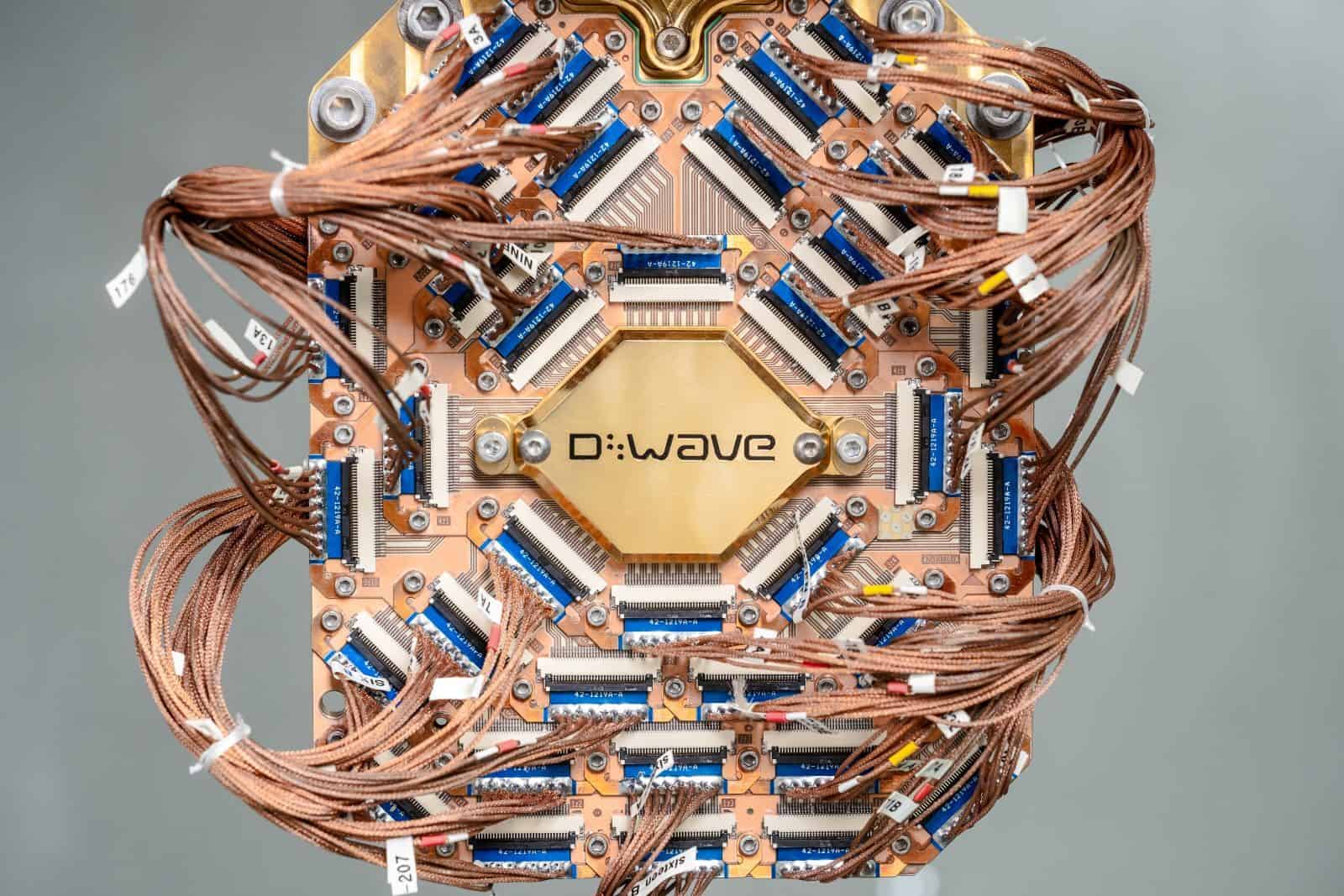
Quantum computing firm D-Wave has achieved a singular breakthrough: it has simulated the “properties of magnetic materials,” opening up the opportunity to “invent” new materials without having to produce them physically in a lab, as D-Wave CEO Alan Baratz told Fast Company.
What it means: The achievement, first published in Science earlier this month, marks the first time a quantum computer has solved a useful, real-world problem that a classical computer couldn’t manage.
- In fact, “To simulate the property of magnetic materials on a classical computer—as the D-Wave team recently did using its quantum computer—would require nearly 1 million years and more energy than the entire world utilizes over the course of a year. D-Wave’s team did it in 20 minutes,” according to Fast Company.
Quantum vs. classical: “Rather than store information using bits represented by 0s or 1s as conventional digital computers do, quantum computers use quantum bits, or qubits, to encode information as 0s, 1s or both at the same time,” D-Wave explains on its site.
- “This superposition of states—along with the other quantum mechanical phenomena of entanglement and tunneling—enables quantum computers to manipulate enormous combinations of states at once.”
- D-Wave’s annealing quantum computer uses these capabilities to solve problems by finding the “lowest energy state” in an enormous range of possible solutions.
- “To imagine this, think of a traveler looking for the best solution by finding the lowest valley in the energy landscape that represents the problem,” as D-Wave puts it.
The possibilities are vast: Being able to simulate materials without creating and testing them in the lab offers significant opportunities for the manufacturing industry and could save companies huge amounts of time and resources. D-Wave foresees that these simulated materials could have applications in everything from “pacemakers to cellphones,” as it told Fast Company.
- “There’s no shortage of potential applications,” said D-Wave Chief Scientist Mohammad Amin.
Further innovation: Another impact of quantum computing is its potential to revolutionize blockchain technology, D-Wave told us.
- “Manufacturers are increasingly adopting blockchain technology to enhance supply chain transparency, track product origins, improve inventory management, and streamline operations. This adoption has led to increased efficiency and reduced costs,” said D-Wave Global Government Relations and Public Affairs Leader Allison Schwartz.
- “Annealing quantum computing offers a potential solution by providing a faster and more environmentally friendly alternative to manufacturers’ current mining operations using classical computers.”
Schneider Electric to Invest More Than $700 Million in U.S.
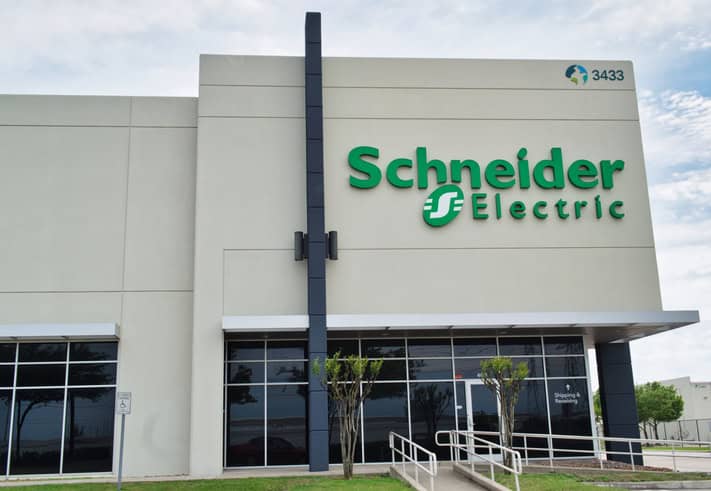
Global energy management and digital transformation giant Schneider Electric will invest more than $700 million in U.S. operations over the next two years, the company announced yesterday (The Dallas Morning News, subscription).
What’s going on: “Schneider said it intends to leverage the investment to ‘support the country’s focus on bolstering the nation’s energy infrastructure to power AI growth, boost domestic manufacturing and strengthen energy security.’”
- The investment—the largest planned single capital expenditure in Schneider Electric’s 135-plus-year history—will be used to expand manufacturing facilities across the U.S. and to boost “smart factory transformation” across Texas, Massachusetts, Missouri and Tennessee, among other states.
- The company is the latest in a string of large manufacturers to announce sizeable domestic investments. Last week, biopharmaceutical firm Johnson & Johnson said it would spend more than $55 billion in the U.S. over the next four years.
- The announcement comes less than a year after the opening of Schneider Electric’s 105,000-square-foot facility in Red Oak, Texas, to support the data center boom in the Dallas–Fort Worth area.
Where else funds will go: The money will also be used to expand a campus in El Paso, Texas, “to keep up with growing demand to increase production of switchgear and power distribution products,” and to open a Houston innovation center that will offer AI-powered automation solutions.
Our take: “Schneider Electric’s significant investment is a clear sign that manufacturing in America is moving forward—driving economic growth, innovation and job creation across the country,” NAM President and CEO Jay Timmons said in a statement quoted in the article.
- “By expanding their operations with a focus on energy security, automation and AI, Schneider Electric is not only strengthening America’s competitiveness but also creating new opportunities and powering our nation’s future.”
Manufacturing Wins: J&J Invests More Than $55 Billion
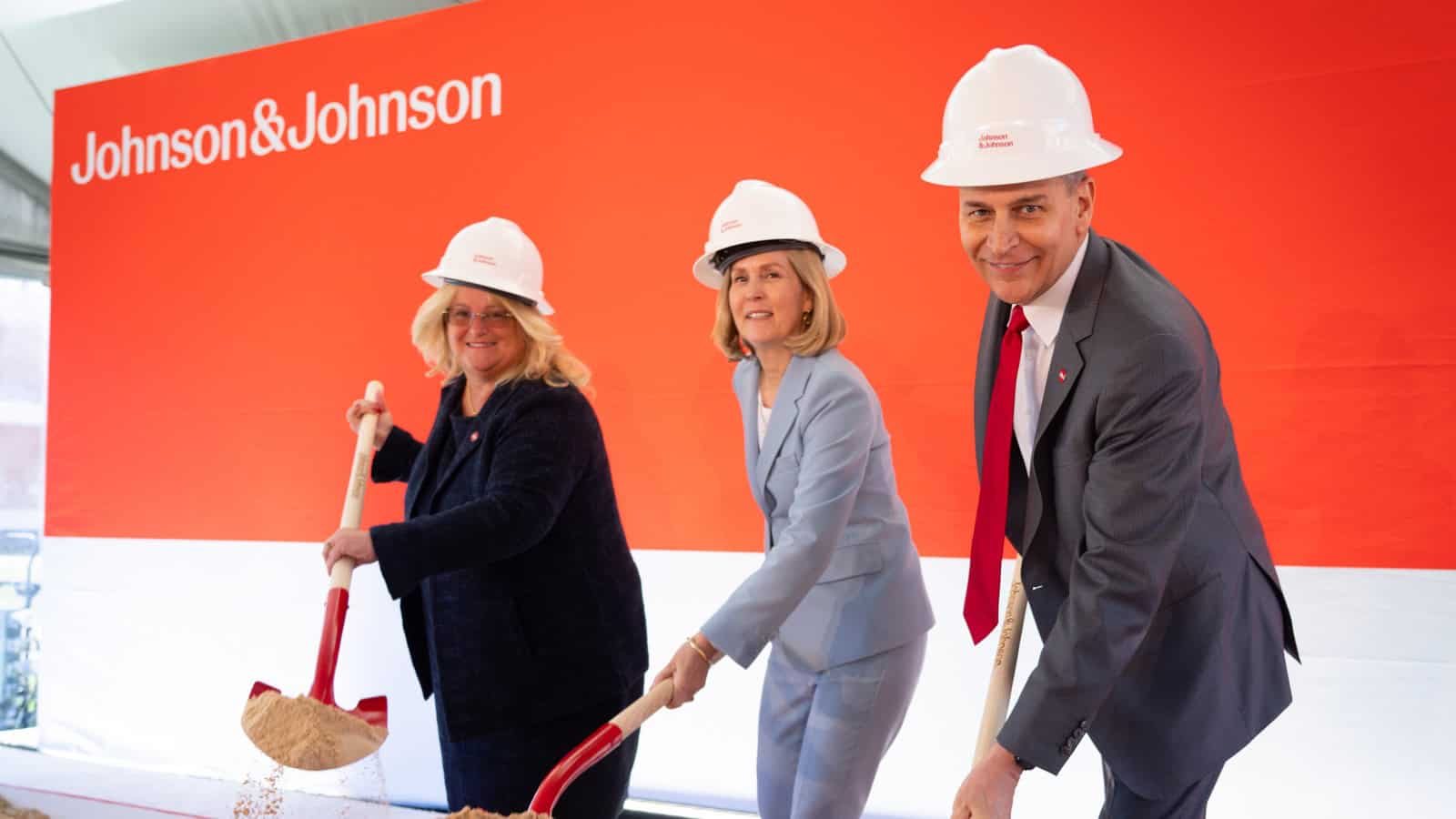
Johnson & Johnson will spend more than $55 billion on manufacturing, research and technology in the U.S. over the next four years, the biopharmaceutical company announced (Axios). These investments include a long-planned $2 billion state-of-the-art biologics facility in Wilson, North Carolina.
What’s going on: The NAM joined J&J for the groundbreaking of the 500,000-square-foot biologics manufacturing plant in Wilson on Friday.
- The White House praised the announcement and J&J’s commitment to manufacturing in America. North Carolina Gov. Josh Stein and Rep. Don Davis (D-NC) also attended the ceremony to highlight the facility’s importance to the state economy and the jobs it will bring to the state.
Other projects across the total investment will include:
- Three new advanced manufacturing sites and the expansion of several facilities in J&J’s Innovative Medicine and MedTech businesses;
- Significant spending on research-and-development infrastructure “aimed at developing lifesaving and life-changing treatments in areas such as oncology, neuroscience, immunology, cardiovascular disease and robotic surgery,” according to the company; and
- More investment aimed at speeding drug discovery and development, supporting workforce training and improving business operations.
Common goal: The Wilson site demonstrates the power of collaboration, Johnson & Johnson Executive Vice President and Chief Technical Operations & Risk Officer and NAM Board Chair Kathy Wengel said at the groundbreaking.
- “Today is a tangible example of how J&J is bringing communities, government, education and industry together to achieve the common goal of creating a future-ready workforce that is ready to tackle the toughest health challenges and achieve new breakthroughs.”
Why it’s important: The investments will strengthen not only North Carolina’s economy, but the U.S. economy as a whole, NAM President and CEO Jay Timmons said at the event.
- “Every $1 invested in manufacturing adds more than $2.60 to the economy. That’s top-of-the-line ROI for communities, neighborhoods and cities like Wilson—among the best ROIs you can get. And every new manufacturing job supports, on average, five additional jobs in other industries.”
The big picture: The new Wilson facility will generate a $3 billion impact across North Carolina in its first decade of operation.
- It will support about 5,000 jobs during construction and create more than 500 permanent positions—paying an average of $109,000 a year—in the state (WRAL News).
Certainty and predictability: These investments illustrate why policymakers must ensure that manufacturers have more certainty and predictability, not less, Timmons added.
- “Manufacturing—especially biopharmaceutical manufacturing—requires years of planning, ingenuity and investment decisions,” he said. “When there’s stability, common sense and competitive policies, companies like Johnson & Johnson can plan for the future—and plan big.”
- Timmons said that to “make more wins like this happen,” elected officials must stay focused on a comprehensive manufacturing strategy, including a “competitive tax policy, balanced regulations, prompt permitting, abundant energy and smart trade policies.”
The tax factor: J&J credits the 2017 Tax Cuts and Jobs Act with allowing it to increase its investment, according to MassDevice.
- Investments like J&J’s “are why it is critical that pro-growth provisions of the 2017 tax law be made permanent and more competitive,” Timmons wrote in a social post. “If Congress fails to act, 6 million American jobs—184,000 in North Carolina—will be wiped out. We can’t let that happen.”
- But if Congress does preserve the measures, manufacturing will win, Timmons said. “And when manufacturing wins, America wins.”
Digital Transformation Sees Explosive Growth

Manufacturers are increasing their investments in digital assets, according to a recent survey from the Manufacturing Leadership Council, the NAM’s digital transformation division.
What’s going on: Due in large part to expectations of economic growth, manufacturers plan to either maintain or boost their spending on smart factory investments, they told the MLC in the recently published results of the Smart Factories and Digital Production Survey.
- Respondents also said they are optimistic about continued digitization and adoption, with 69% expecting moderate growth and no recession.
- While 28% would call their current operations “smart” or “somewhat smart,” 76% expect to be there in the next two years.
- Awareness of AI is growing by leaps and bounds among manufacturers; some 34% said they see AI as very significant. (Last year, just 10% said the same.)
Key points: The survey’s top takeaways include the following:
- Digital transformation is changing the game: Most manufacturers—60%—see digital transformation as something that is redefining the industry.
- More manufacturers are going digital: Some 75% of manufacturers say they are at “midlevel” digital maturity, up significantly from 2024 and 2023.
- AI’s role is inevitable: Fully 80% of manufacturers fully or partially agree self-managing and self-learning facilities powered by AI and machine learning are coming.
How a Small Manufacturer Offers Big Retirement Benefits
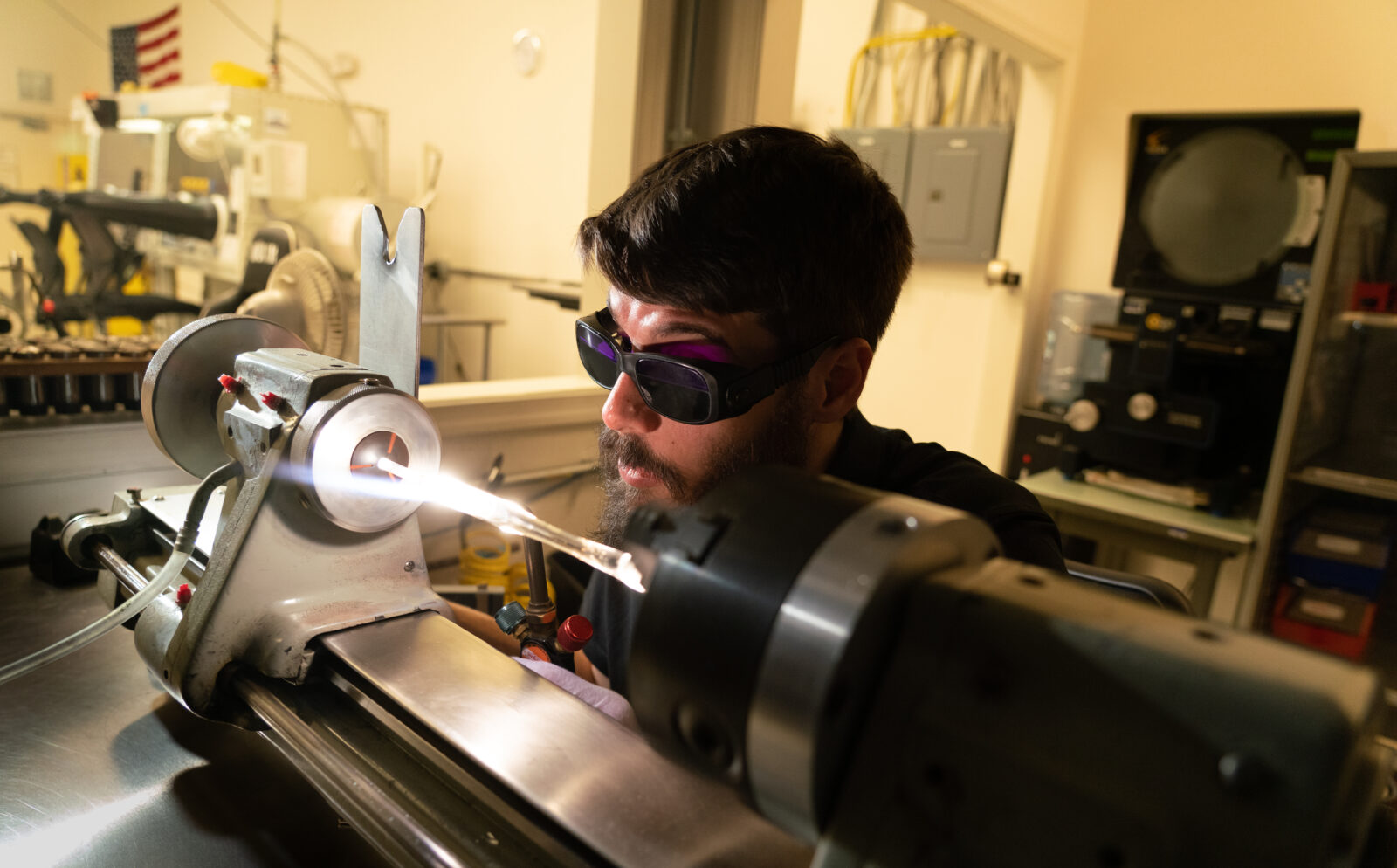
401(k) fees are a hot topic of conversation if you are an HR leader. When Miltec UV Human Resources Director Karen McKernan was discussing 401(k)s with an old friend, she discovered that Miltec, a small manufacturer, paid much more in fees than her friend’s larger employer. She was aghast, but what could Miltec do about it? The company did not have the purchasing power of a large firm, and so its options seemed limited.
Not so fast. Soon after that conversation, McKernan started receiving emails from the NAM about its new multiple employer plan, the Manufacturers Retirement & 401(k) Savings Plan, which allows many companies to participate in one 401(k) plan. Not only does the larger number of participants lower the fees, but the plan offers administrative and compliance oversight, as well as other benefits.
After doing her research, McKernan was convinced. By mid-2022, she was working with the NAM, the plan administrator, and recordkeeper and service provider Principal to make the switch. On Nov. 1, 2022, the new plan went live for Miltec employees. Today, McKernan says, she would never go back.
The benefits: Once McKernan laid out all the advantages for Miltec’s owners and 401(k) trustees, NAM 401(k) was an “easy sell,” she told us.
- Not only did the fee reduction seem like a “no-brainer,” but the new plan would lift a considerable administrative burden that had fallen entirely on McKernan. It would also offer benefits to employees that Miltec, as a small company, could not add on its own without creating even more administrative tasks.
- Furthermore, the NAM 401(k) comes with an independent 3 (38) investment fiduciary, One Digital, which reviews the funds’ performance regularly and issues reports on a quarterly basis, ensuring low-performing funds are “watched” and subsequently removed and replaced when needed. By delegating investment decisions under this arrangement, a company significantly reduces its potential liability for poor investment decisions.
- Additionally, any plan with more than 100 participants must undergo an annual audit, which is time consuming and expensive. Under NAM 401(k), the plan coordinates and manages the audit for participating companies.
What she doesn’t miss: McKernan listed all the duties she used to perform for Miltec’s own 401(k), which have now been taken over entirely by the NAM’s plan. She doesn’t miss:
- Monitoring enrollment, which Miltec’s employees can now undertake directly on Principal’s website;
- Sending out many required annual notices;
- Compliance testing and 5500 filings (which ensures the plan meets the IRS’s requirements for retirement plans, so that employees can receive tax benefits);
- Sending out summary annual financial reports and quarterly statements; and
- Handling employees’ questions and all communications about the plan.
In contrast, McKernan now only provides information to Principal through an automated payroll report and keeps an eye on how things are going, just in case. There have been few problems, she told us, and those were fixed with alacrity by Principal and the NAM.
Implementation: The entire timeline, from learning about NAM 401(k) to finalizing the switchover, took no more than a few months, McKernan said.
- Principal oversaw the transition, with weekly check-ins, a dedicated project manager and a schedule that included clear deadlines. While transitioning 401(k) plans is “a project,” McKernan said, Principal “managed it very well, including all required communications, and finishing right on time.”
- A word of advice: “If I had to do it all over again, I would have moved the plan over on Jan. 1 instead of Nov. 1,” said McKernan. Having two different plans in one year proved to be more of a headache than she expected, as it forced Miltec to do compliance testing on both plans in 2022.
The reception: “The company’s employees and owners are very pleased with the new NAM plan,” McKernan said.
- Aside from the savings in time and money, NAM 401(k) offers a host of other features that manufacturers can customize. One new feature that has proved popular with Miltec’s employees is loans, noted McKernan.
- In addition, Miltec’s previous plan had a 12-month waiting period before employees could participate, but NAM 401(k) reduced the wait to six months—which is far more appealing to new hires, she added.
- Ultimately, Miltec’s leaders and employees understood and appreciated the logic of joining a multiple employer plan, said McKernan. “They recognize the more participants you have, the more buying power you have. They are seeing the positive results of having access to a robust fund lineup and how that translates to lower fees every time they receive a quarterly statement.”
The bottom line: “I honestly don’t see how a small manufacturing company wouldn’t benefit from joining the NAM 401(k),” said McKernan.
- “I’ve been in HR for a very long time, and when we talk to job candidates about benefits, the 401(k) plan always comes up. It’s a benefit that is necessary to attract talent, as well as help your employees meet their retirement goals,” she added.
- “I wouldn’t hesitate to recommend this plan to any small, medium or large manufacturer.”
Rethink 2025 Is Coming Up Fast
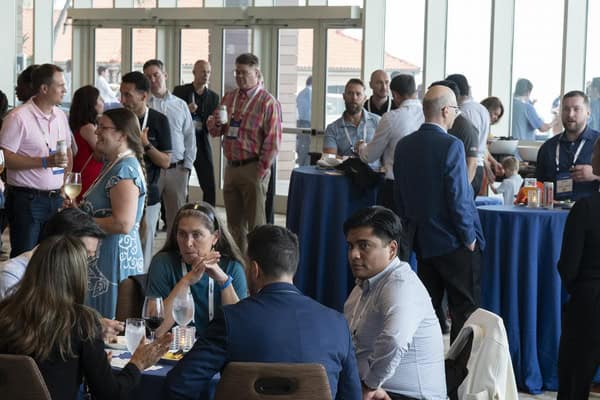
Get ready! Manufacturing’s leading annual event on accelerating digital transformation is right around the corner.
What’s going on: Rethink—held by the Manufacturing Leadership Council on Marco Island, Florida, each June—is a must-attend conference for anyone interested in Manufacturing 4.0 and where it’s headed (The MLC is the digital transformation division of the NAM.)
- This year’s event takes place June 15–18 at the JW Marriott Marco Island Beach Resort.
Why you should go: Rethink attendees will get an inside look at the cutting-edge processes and technologies transforming manufacturing today—directly from those creating and implementing them. They’ll also get a chance to:
- Consult with peers on manufacturing’s most critical initiatives, including smart factories and digital production, resilient supply networks and analytics and data mastery;
- Participate in real-time discussions and one-on-one meetings to help them understand how various solutions can solve their business problems;
- Hear from industry leaders and experts during panel discussions, executive interviews and more;
- Interact and collaborate with peers during interactive “think tank” sessions; and
- Hear from the MLC’s event partners during Rethink’s exclusive VIP Tour.
Who will be there: Scheduled speakers include Siemens USA President and CEO Barbara Humpton, Eaton Vice President of Industry 4.0 Craig Sutton, Hershey Company Vice President of Manufacturing, Operations Technology and Supply Chain Strategy Will Bonifant, Rockwell Automation Senior Vice President of Intelligent Devices Tessa Myers and many more.
The gala: Closing out the packed three-day event is the Manufacturing Leadership Awards Gala, at which the MLC will recognize award finalists and winners of the Future of Manufacturing Award, the Manufacturing Leader of the Year, the Small/Medium Enterprise Manufacturer of the Year and the Large Enterprise Manufacturer of the Year. The gala will take place on the evening of June 18.
Attend: Register online here for Rethink 2025. (NAM members get a discount at checkout.) Questions? Send them to [email protected].
Trend of the Week: Enabling Innovation in Manufacturing
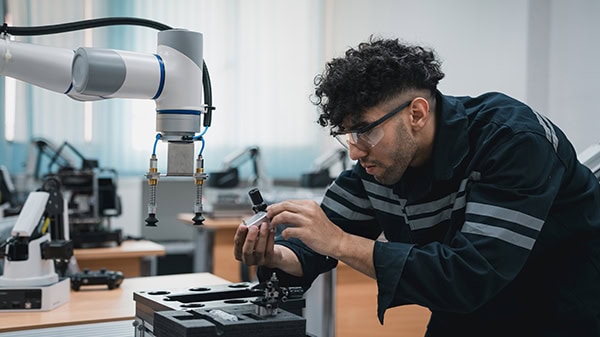
At the NAM, we’re examining some of the top trends that are shaping manufacturing this year, and offering the resources you need to take action.
Today, we’re taking a look at the industry’s efforts to enable innovation—and how manufacturers are working to stay on the cutting edge.
Applying technology: Digitalization can increase the speed and agility of innovations in areas like prototyping, iteration, simulation and modeling. And by using AI and data analytics to improve decision-making, manufacturers can build resilient, transparent supply chains that are more efficient and effective.
Upscaling workforces: Because of the rapid pace of technological advancement and adoption, manufacturers will have to create a workforce that is ready for the future—and processes designed to transfer knowledge and skills effectively and continuously.
Harnessing partnerships: Manufacturers can lean into collaborations that help to accelerate innovation. By connecting with manufacturing peers, government institutions and academia, industry leaders can develop unique and inventive paths forward.
Expert insight: According to CEO and Co-Founder of Narratize Katie Trauth Taylor, tools like generative artificial intelligence can accelerate and automate manufacturing innovation—with human ingenuity at the helm.
- “Human-led AI methodologies enhance teams’ ability to analyze opportunities, translate complex concepts into compelling business cases and think deeply about their innovative work,” said Taylor. “With reduced documentation and improved communications, product teams can reallocate their time value-generating work—deeper market research, sharper strategy and accelerated development.”
Resources for you: Want to dive deeper? Check out some additional resources from the NAM.
- Explore the Innovation Research Interchange, a division of the NAM that focuses on value creation and top-line growth through the management of innovation.
- Join one of the Manufacturing Leadership Council’s Plant Tours in person—or read summaries of past tours—to get an inside look at how other manufacturers have reshaped processes to advance their businesses.
Former TSA Communications Lead Joins the NAM

Former Transportation Security Administration Assistant Administrator for Strategic Communications and Public Affairs Alexa Lopez has joined the NAM’s communications team.
What’s going on: Lopez, a native of Dayton, Ohio, is the NAM’s vice president of communications and public affairs, a newly created position.
- “Alexa knows how to navigate complex challenges, craft compelling narratives and drive real impact,” NAM President and CEO Jay Timmons said. “She has built a career on delivering results, and manufacturers will benefit from her ability to elevate our industry’s voice at a time when manufacturers’ influence on the future has never been more important.”
- Lopez holds a Master of Public Affairs and a Master of Arts in Arts Administration from the Indiana University O’Neill School of Public and Environmental Affairs.
Proven track record: At the TSA, Lopez led all media operations, strategic communications, marketing and branding and multimedia efforts and served as adviser to the TSA administrator. She was at the agency for four years.
- Prior to that, Lopez worked in public affairs at the Federal Emergency Management Agency, the American Society of Civil Engineers, Ogilvy Public Relations and the City of Bloomington, Indiana.
How Manufacturers Can Save Millions Through Incentives Programs
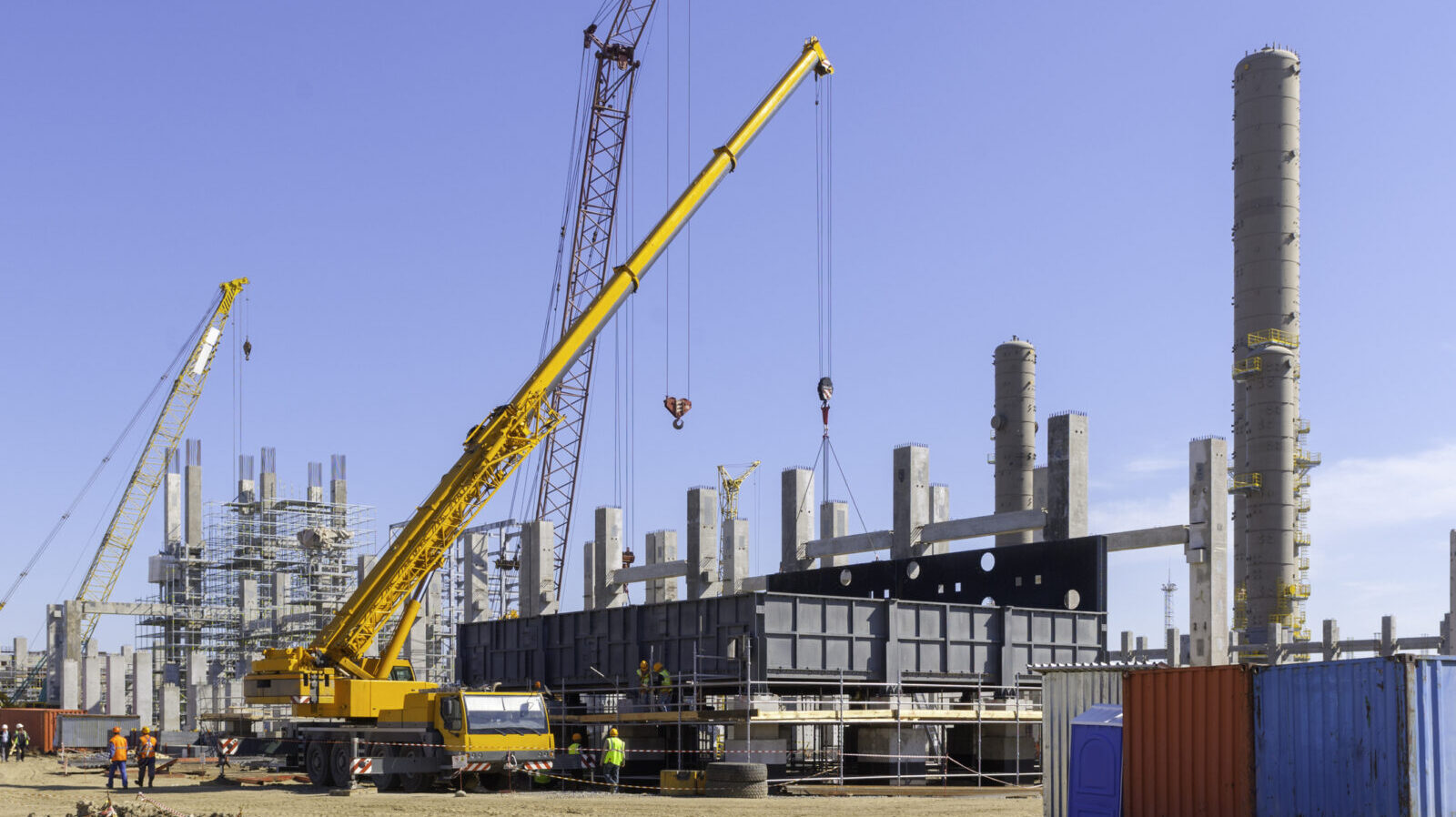
“$80 billion is given away every year in state and local incentives,” according to Atlas Insight Managing Partner Brian Corde. “Plus, the Biden administration has added $455 billion just in federal grants.”
In this investment landscape, manufacturers need all the help they can get finding, applying for and complying with these incentive programs. Atlas Insight, the NAM’s partner for its Incentives Locator, walks companies through this entire complicated process.
Last week, we talked to Corde and Kathy Mussio, Atlas’s other managing partner, about how companies select their new sites. This week, we’ve asked them what manufacturers need to know about incentives.
How do incentives work? Incentives come in two forms, Corde and Mussio explained. First is the type you automatically qualify for if you meet the requirements, known as statutory or as-of-right incentives.
- The second is the type that Atlas lends its expertise to—discretionary incentives. These programs offer funds and other pools of money that require business cases, negotiation, applications, and later, proof that a company has met its stated obligations (also known as compliance).
- These programs can take many forms. As Mussio put it, “Some states have programs that offer cash to help close the financial gap between two competing locations or increase a project’s ROI—helping to make a location more competitive in the financial analysis.”
- There are many, many incentives out there, the Atlas partners told us, and the most important steps are understanding which ones a company may be eligible for and helping clients quantify the potential savings.
What if you’re staying put? These incentives aren’t just for new facilities, Corde and Mussio emphasized. “A majority of incentives are given to companies staying in place,” Corde added.
- Companies can take a lot of actions to qualify for incentives—expand their workforces, buy new equipment, train workers in new technologies or add square footage for new production lines.
- “It’s our job to help NAM members identify their projects that could use incentives. Then we benchmark the incentives, then negotiate on the companies’ behalf, then lock the incentives down with the state or city,” Corde said.
What’s benchmarking? Atlas compares incentive offers from states and localities with the incentives awards that similar companies have received in the past, another way to help ensure that their clients get the best possible deals. There’s always room for negotiation, the partners say.
- Atlas keeps two databases: the first, a listing of all the incentives that exist on the federal, state and local levels, along with all the necessary forms, key contacts and any other requirements. The second database is a list of what other companies have received for similar types of projects.
- This allows Atlas to identify the typical dollar range that an incentive should provide—so a company knows whether it has been offered a good deal, and whether it should negotiate, or even go elsewhere.
How do you get the money? After companies successfully secure an incentive award, they must follow compliance schedules to ensure they keep receiving the funds as project milestones are met, while also retaining documentation in case of audit.
- The government offering the incentive typically requires filings to verify how many employees were hired, the wages they earned, even the employers’ contributions to health insurance premiums.
A lot to lose: “We are being conservative when we say that 50% of incentives awarded never pay out,” Corde said, all because companies fail to fulfill compliance requirements.
How can Atlas help? Atlas creates a “holistic incentive management for its clients, for the entire life of the incentive,” so that companies actually receive their money, the partners explained. It even helps with old incentives that remain incompletely documented.
- “When we retained Atlas, it enabled us to bring several one-off incentive agreements around the U.S. into a centralized process,” said a Schneider Electric spokesperson. “That made it so much easier for us to document our part of the expansion agreements and collect the incentives we were owed. Plus, their performance-based fee for this process has been best in class.”
How to get started: The NAM Incentives Locator is a service for NAM members, which provides a complimentary initial assessment call and preferred rates on contracted services, including an exclusive success-based fee schedule.
- Atlas is often “only paid for successful outcomes, either a confirmation letter or when the company receives the money over time. We will help you be successful and then benefit once you are,” said Corde.
The bottom line: “You need to have a strategy to go after these incentives, because your competitors are.”
Lucid Revs Up the Domestic Graphite Supply Chain
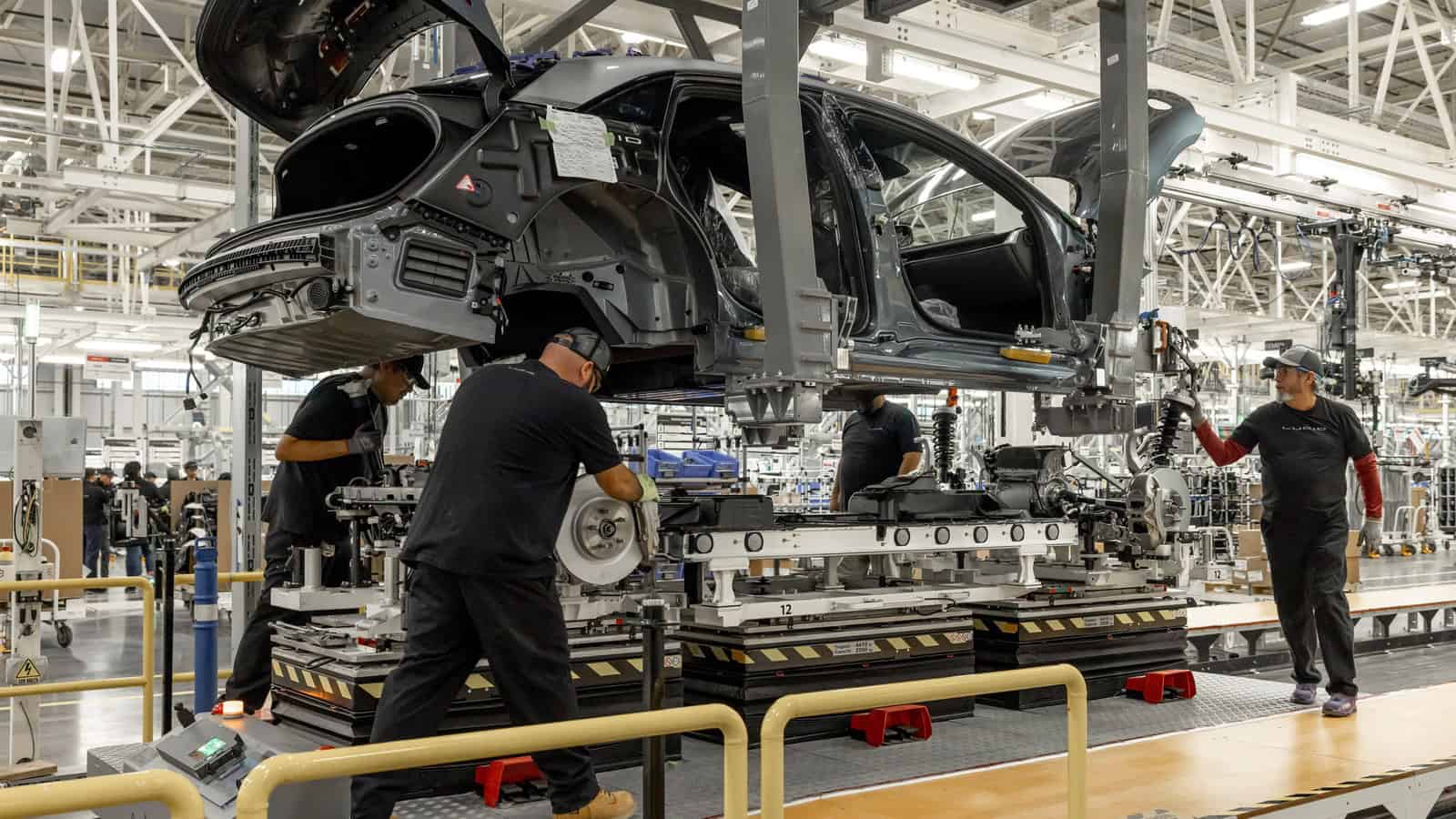
Lucid has already made one of the most energy-efficient cars on the market. Now the company is on a mission to strengthen supply chains for the critical materials powering its award-winning vehicles.
Supply chain warrior: The California-based electric vehicle manufacturer—whose 2025 Air Pure sedan is the first EV to achieve a milestone 5 miles of range per kilowatt of energy—recently reached an agreement with Alaskan mining exploration company Graphite One to purchase synthetic graphite for its vehicles’ battery packs.
- The deal, which goes into effect in 2028, is a crucial first step toward cementing a domestic supply chain of graphite, a mineral that makes up about half of every EV’s battery composition. EV batteries require both synthetic and natural graphite.
- “Today 100% of the graphite for batteries assembled in the U.S. comes from overseas,” said Lucid Motors Supply Chain Group Manager of Battery Raw Materials Michael Parton. “Building a robust domestic supply chain ensures the United States and Lucid will maintain technology leadership in this global race.”
Pandemic lesson: The global pandemic revealed the downside of depending on other nations for critical materials, and the importance of cultivating domestic sources instead.
- In 2020, “every company experienced major challenges when it came to shutdowns and global trade,” Parton said. “Having a domestic supply reduces production risk, accelerates response time and agility and lowers the need to carry higher levels of inventory.”
A midstream gap: When it comes to EV batteries and their supply chains, “much of the discussion is on localizing the bookends of the supply chain, the downstream battery production and the upstream mineral extraction,” Parton told us.
- Less discussed is the “midstream environment,” which comprises the precursor cathode active materials (P-CAM) and cathode active materials (CAM) stages. Materials used during these phases in the battery production process include critical minerals such as lithium, nickel and cobalt.
- The P-CAM market has been a difficult one to navigate, Parton added. For years, the P-CAM stage has been outsourced to countries with more cost-effective production. The problem: These countries also have less stringent environmental regulations than the U.S.
- “There’s limited investment announced [in the U.S.] in the refining and chemical conversion process at these stages, but it’s where the real need is,” Parton continued. “To promote localized sources of supply for mined and recycled minerals, there needs to be a domestic option for both P-CAM and CAM.”
A bipartisan issue: Lucid’s advocacy for a strong domestic supply chain has won bipartisan support in Congress.
- “There’s something in it for everyone when it comes to efficiency,” said Lucid Motors Senior Manager of International and Trade Policy Emily Patt, citing the environmental and self-sufficiency benefits of a resilient domestic supply chain.
What’s next: Lucid is expanding its vehicle lineup beyond the Air and the vehicle’s four trim levels.
- By the end of 2024, the company is scheduled to start production of the seven-passenger Lucid Gravity. The company has also teased an upcoming midsize platform, which is expected to start production in late 2026.
The grand vision: “The pursuit of efficiency drives Lucid as a company,” Patt said. “We’re not just making zero-emission cars; we’re committed to making the best use of the world’s resources to maximize the benefits for electrification and the planet.”
